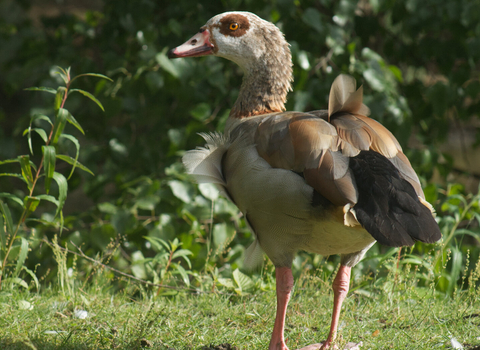
Egyptian goose © Tom Hibbert

Egyptian goose © Tom Hibbert

Egyptian geese © Andy Morffew

Egyptian goose with goslings in a park © Tom Hibbert
Egyptian goose
Egyptian geese were introduced to Britain from Africa. They are now widespread in southern England.
Scientific name
Alopochen aegyptiacaWhen to see
All yearTop facts
About
Egyptian geese aren't true geese, they're members of the shelduck sub-family, Tadorninae. They are naturally found in Africa, in the Nile valley and south of the Sahara. They were introduced to Great Britain to be kept in wildfowl collections. Since then birds have escaped and established populations in the wild. They've also become established in other parts of Europe, the United Arab Emirates, and even the USA.Egyptian geese are found on a variety of wetlands, including gravel pits, as well as in large urban parks. Their ideal habitat has open grass with a few trees, close to freshwater. They usually nest in cavities in old trees, but will also nest under bushes on islands, or in the nests of crows or raptors. They've been recorded taking over the nests of ospreys and outcompeting barn owls to use nest boxes. The main nesting season is from February to June, but they sometimes start laying eggs in January. They're highly territorial and will fiercely defend their territory, nesting site, and young.
